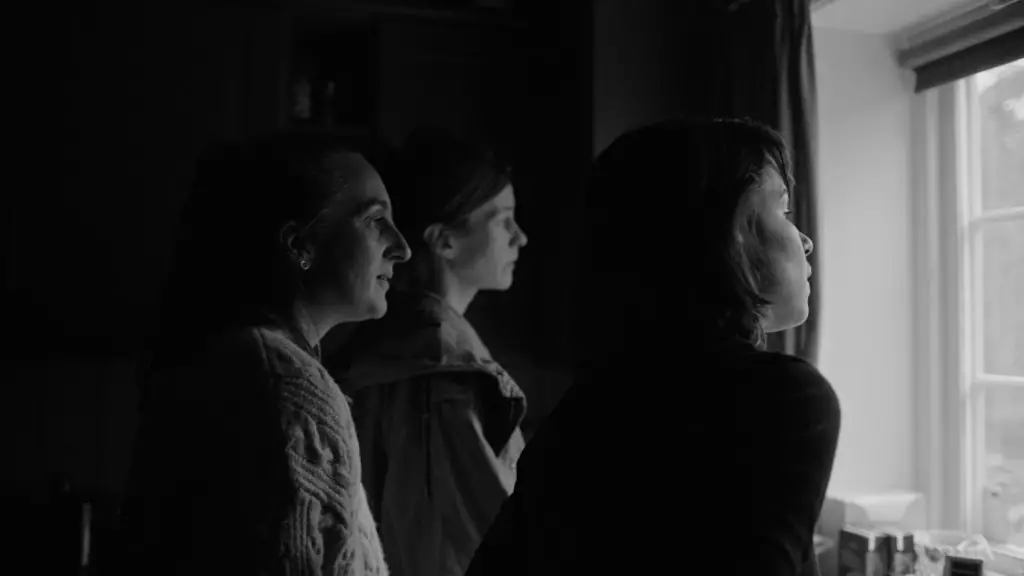In a landscape often dominated by predictable narratives, “Dawning” emerges as a beacon of bold storytelling that transcends mere genre boundaries. Collaborating with SpectreVision—renowned for its innovative horror and indie films—the Norwegian filmmaker Patrik Syversen crafts a cinematic experience that is as emotionally stirring as it is visually haunting. The film deftly blends Scandinavian sensibilities with a horror prism, offering viewers a layered exploration of trauma, familial bonds, and primal instincts. Rather than settling for superficial scares, “Dawning” challenges audiences to confront unsettling truths, making it a significant leap forward for international genre cinema.
What truly distinguishes this project is its willingness to explore complex psychological terrains within a visceral framework. The story revolves around three sisters retreating to their family’s remote vacation home following the youngest sibling’s repeated suicide attempts. As news of the mother’s death spreads, the sisters grapple with grief, secrets, and the burden of past abuse. The arrival of a mysterious stranger acts as a catalyst, exposing hidden vulnerabilities and primal fears. This narrative is not merely about horror but about the devastating impact of suppressed trauma, a theme that resonates deeply with contemporary audiences hungry for storytelling with depth.
A Unique Artistic Consortium: Merging Talents Across Borders
Syversen’s collaboration with SpectreVision signifies more than just a partnership; it’s a convergence of inventive energies. The production personnel, including Elijah Wood, Daniel Noah, and Lawrence Inglee, bring their celebrated sense of the subversive to the project. Their involvement signals a strong commitment to creating films that are daring and distinctive. Additionally, the film pools top Norwegian talent—Kathrine Thorborg Johansen, Marte Magnusdotter Solem, Thorbjørn Harr, and Steinar Klouman Hallert—whose performances promise to add authenticity and emotional gravity to the narrative.
The technical artistry is equally impressive, with Andreas Johannessen’s cinematography promising a visual language that is both atmospheric and primal. The choice to produce via the newly formed Planete Sauvage, alongside Einar Film, demonstrates a deliberate intent to elevate Scandinavian cinema on an international stage. It’s a strategic move that aligns with the global ambitions of “Dawning,” which is slated for a late 2025 release in the Nordics, with international distributions still unfolding.
Challenging Conventions: A Film That Commands and Confronts
What makes “Dawning” truly compelling is its fearless tone—a characteristic that reflects both the directorial vision of Syversen and the seasoned confidence of SpectreVision. Instead of shying away from unsettling imagery or difficult themes, the film embraces these elements as integral to its storytelling. This attitude not only sees it as a genre piece but as a form of cinematic activism—prompting viewers to face uncomfortable truths about family, history, and human nature.
The film’s storytelling approach suggests a powerfully visceral experience—one that pushes audiences beyond their comfort zones. SpectreVision’s statement about the film underscores this, describing it as “bold,” “riveting,” and “poignant,” and emphasizing its commanding mastery of tone. The alliance with Syversen, who is emerging as a significant voice in international cinema, positions “Dawning” to challenge stereotypical narratives and contribute to a renaissance of Scandinavian horror that prioritizes emotional depth over cheap thrills.
Looking Beyond the Surface: A Cultural and Emotional Revolution
Ultimately, “Dawning” isn’t solely a horror film; it’s an indictment of the ways trauma shapes familial relationships and personal identity. Its Scandinavian roots bring a unique cultural perspective—facing darkness head-on, with a stoic yet deeply empathetic lens. The film’s thematic richness invites viewers not just to recoil from fear but to introspectively confront their own buried fears and unresolved pain.
This project exemplifies a broader trend within contemporary cinema: the fusion of genres to create emotionally resonant, psychologically complex narratives. By intertwining horror with prestige drama, Syversen and SpectreVision are warning us that true horror lies not just in supernatural threats, but in the darkness lurking within us all. If successful, “Dawning” could ignite a new chapter in Scandinavian filmmaking—one where fear becomes a conduit for profound human insight and catharsis, forever altering how we perceive trauma, healing, and the primal forces that govern us.
